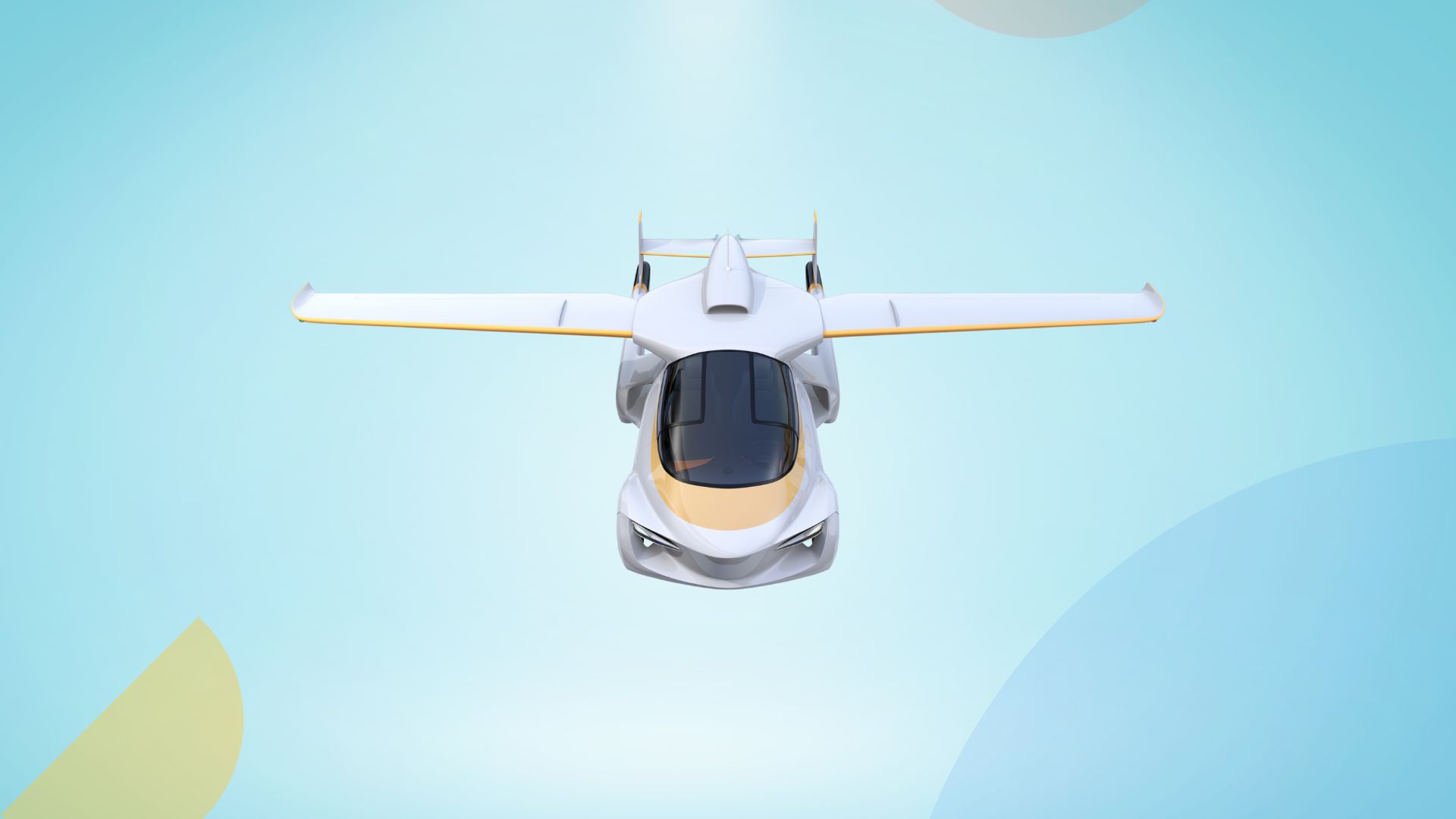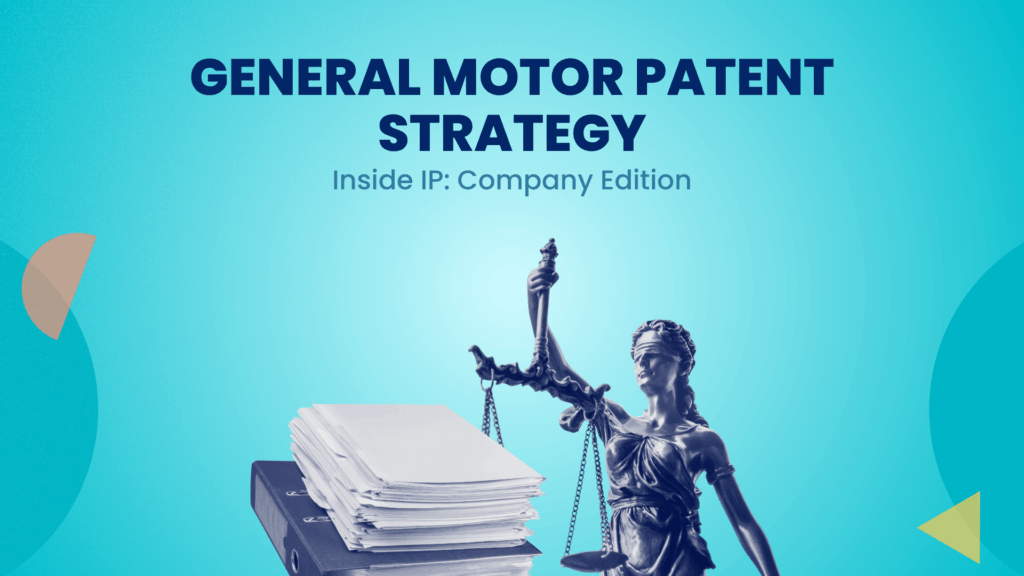“To do more for the world than the world does for you. That is success” – Henry Ford, Ford Motor Company.
Today, flying cars are exactly what cars were in the 1900s, massively in the prototyping and testing stage. And companies compete over research rather than production. Numerous Flying Car companies are trying to advance into the flying-car industry.
They’re constantly innovating their Vertical Take-off and Landing (VTOLs) vehicles’ aerodynamics to outpace their competitors. Actively raising funds and racking up millions and even billions of dollars, getting backed up by automotive veterans, these startups genuinely aspire to rule the skyline!
With an enormous upsurge in population, eventually leading to unavoidable traffic congestion, flying cars have to be the transportation industry’s future.
As we move further into the article, you’ll very often encounter the term “VTOL”. This term is the core requirement to make any flying car a reality, at least to date! VTOL signifies an aircraft that both lands and takes off vertically to/from the ground and if electrically powered, it is re-termed as an electric-VTOL or e-VTOL.
VTOLs make it possible to launch an aircraft in minimal horizontal space, eradicating the need for a runway, added to which the aircraft could be flown through much lesser space, providing more efficient maneuverability, than any conventional aircraft.
Many flying cars startups and companies today aspire to soar high in tomorrow’s cityscape, and if you are one of ‘em, this article is for you!
So put your seatbelts on because we have recently brought in a list of the most competent flying car companies. Ready for the take-off? Here we go.
Curious to know what’s happening with Autonomous Vehicle after trillions of dollars have been spent?

1. SkyDrive Inc.
| Website | https://en.skydrive2020.com/ |
| HQ | Shinjuku City, Tokyo, Japan |
| Funding | ¥5.7 Billion |
| Prime Investors | Itochu Corporation and Technology Ventures, Eneos Innovation Partners, Obayashi Corp, Energy & Environment Investment, Strive Inc., Z Corporation Inc, Drone Fund Inc., Development Bank of Japan, NEC Corporation, VeriServ Corporation, Sumitomo Mitsui Finance and Leasing Company. |
| The innovation they’re bringing to the market | Developing Zero-Emission Flying Vehicles, Reduced travel time, Quiet and Affordable air travel, and extremely compact air vehicles for door-to-door air travel. |
What makes SkyDrive different from other flying-car startups?
Officially established and recognized as SkyDrive in 2018, this flying cars startup began its journey way back in 2012 founded by a voluntary group of individuals recognized as ‘Cartivator’. Ringing its bell loud and clear, planning to leave a vivid footprint in the flying-car industry, SkyDrive seems to be heavily backed by the veteran auto-giant Toyota.
SkyDrive amassed ¥3.9 Billion from the Series B round of the fund-raising. This is a direct indication of how eagerly this startup wants to rule tomorrow’s skyline. This flying car company is majorly focusing to make its fly vehicles compact, light-weight, and completely emission-free. The elementary electric aircraft structure of the SD-XX one-seater/two-seater concept model, majorly adds to the compact and affordable nature of the SD-range of fly-vehicles. (Source)
What innovative prototypes does SkyDrive offer?
Very recently in August 2020, the startup declared the successful completion of the first-ever manned test flight of its first single-seater flying car prototype, SD-03. With that being a success, the company has also brought in talks about the development of a concept model two-seater SD-XX flying vehicle, which may officially be introduced in the year 2023 hovering around the coastal areas of Tokyo and Osaka in Japan.
What’s so special about SkyDrive’s prototype fly vehicles?
Beautifully designed to imitate the soaring white birds, the world’s most compact single-seater cruising electric VTOL- which is recognized as ‘SD-03’ is about 6.5 feet tall and 13 feet each in length and width. At present this fly-vehicle cruises approximately at the speed of 25-31 mph (40-50 km/h), though the company is consistently aiming to elevate its speed in the coming years. Such a compact construct of SD-03 makes it very suitable for day-to-day commutes within a city.
Talking about the architecture of the SD-range of flying-car prototypes, it looks like the company majorly aims on making its eVTOL Urban Air Mobility (UAM), not only compact but also safer by introducing Distributed Electric Propulsion (DEP) in them.
DEP signifies the incorporation of multiple motors and propellers in the aircraft. The redundant motors and propellers would make sure that if a failure occurs for any of the working motors then, the rest of the ones in the good state would facilitate the safe operation of the aircraft.
The company has taken care of minute details which would make the SD-range, an urban utility aircraft in a real sense. For instance, the installation of red running light across the bottom of the fuselage, led by white lights in the front, would help the ground viewers to guess the direction of the aircraft’s commute.
SD-03 Prototype
Looking at the above picture, it could be noticed how imaginatively the engineers placed a pair of electric propellers, motors, and rotors at each corner to make the cruising safer.
At present, at a fairly low speed, the flight time of SD-03 happens to be around 5-10 minutes, driving the Cartivators to scale up the flight time to 30 minutes and the speed to 35-40 mph. Such specific goals set by SkyDrive give a clear picture of it aiming not to develop a mere flying aircraft, but rather one which would become a necessity someday! (Source) (Source)
Latest exhibition/ demonstration
The Consumer Electronics Show in Las Vegas, USA, witnessed a demonstration of SkyDrive’s eVTOL SD-03 (one passenger), making an international announcement of the company’s progress in the flying range of vehicles. The show even hinted at the eVTOL getting scaled up to production level, providing service in Japan, no farther than 2025.
How many patents does SkyDrive have?
SkyDrive has filed about 10-12 patents, mostly in Japan and a few in Europe and Australia. All of the patents are still in the pending phase only.
The majority of its patents are aimed toward defining the architecture of the flying aircraft with multiple rotor blades, the interior of the vehicle, i.e. its seating system, location detection methodologies, and other basic requisites for a flying car’s working.
2. Joby-Aviation
| Website | |
| HQ | Santa Cruz, California, United States |
| Funding | $1.6 Billion |
| Prime Investors | Uber, The Baupost Group, Toyota |
| The innovation they’re bringing to the market | Low-noise footprint during hover. |
What makes Joby-Aviation different from other flying cars startups?
Akin to numerous other successful auto-giants, this startup also began its journey to the sky, out of a ‘Barn’. Yes, you read that right. In 2012, a group of very passionate individuals toiled until this day, in the mountains above Santa Cruz. The engineers at Joby-Aviation believed in studying the fundamentals of aircraft and then building each component from scratch. After kick-starting alone, the company looks like envisioning and practicing the idea of “Collaborating and Rising”.
With NASA having its back, Joby very luckily got to set its foot in the flying-car industry and collaborate on multiple electric aircraft projects. It has successfully completed its pre-production prototype testing and now is mainly working close-by engineers from Toyota, guiding Joby-ian with their mastery in mass-scale production and factory layouts. With the vision of making the best use of what’s already there, in 2020, Joby had a breakthrough expansion, by acquiring Uber Elevate. This would surely provide an upper edge to Joby, by getting it integrated into Uber App’s ride-sharing aerial service. (Source)
Next, to be constantly drawing out insights about urban mobility, it has also collaborated with Urban Computing Foundation (UCF), which would empower Joby with its open-source tools in order to carry out data visualization and airspace analysis. There are many other collaborations made by the startup to escalate its growth in this industry, such as the one with SK Telecom, driving it across the waters up to the South Korean urban aerial mobility. Nonetheless, after over seven rigorous rounds of fund-raising, the startup has managed to rack up $1.6 Billion.
What Innovative Prototypes does Joby-Aviation offer?
Getting a view of how Joby rose from the Barn to the sky, it would be good to get a glance at different prototypes it’s been building upon and their specialties.
Joby Aviation’s S4 aircraft is nearly overshadowing its competing flying car models. Not only its architecture and build are the reason behind it, but also Joby’s aircraft are the very eVTOLs that flourishingly completed its first series of Federal Aviation Administration (FAA) conformity tests. This has put a stamp on the strength of the composite materials used by Joby in its aircraft, hereby paving the way for it to take the charge of the skyline.
Adding to that, Joby also happens to be the very first and sole flying cars startup having signed a G-1 (stage 4) certification, alongside filing applications for Part 135 Air Carrier Certificate (by FAA), looking forward to full-fledged getting its air taxi certified with the FAA, by 2023. The US Air Force even awarded Joby’s eVTOL an airworthiness status making it a silver lining for Joby’s future air voyage. (Source) (Source)
What’s so special about Joby-Aviation’s prototype aircraft?
The S4 prototype is a five-seater aircraft (four passengers and a pilot) having carried out over 1000 flight tests, cruising up to a phenomenal speed of 200 mph (322 km/hr). This is the fastest eVTOL prototype that the world has witnessed to this date.
Delving deeper into the structural aspect, this fly-car delivers an efficient cruising experience getting powered by six propellers facilitating its vertical takeoff and landing by appropriate tilt. Good care has been taken to keep the acoustic footprint of the aircraft minimal. This has been achieved by efficiently and carefully selecting the disk loading, quantity of blades and their radii, top speeds, etc. To help curb blade vortex interactions, the propellers are equipped with provisions for independently making adjustments to the quantities like rotational speed, tilt, and blade pitch. This significantly reduces the excessive noise produced in conventional helicopters. Joby has also released videos supporting the quiet nature of its aircraft during various flying stages such as take-off, hover, and overhead flight.
The S4 uses lithium-ion batteries very well remodeled for the aerospace industry. Very meticulously Joby opted for a graphite anode cell with an 811 NMC cathode, to achieve the exact power to experience a smooth VTOL, an affordable cycle life, and a flying speed of 150 mph effortlessly. (Source)
Latest exhibition/ demonstration
Joby’s S4 has been able to complete the farthest and longest electric flying car test the previous year. Vertically taking off and shifting to a forward flight, it flew past 1 hour covering a total distance of 154.6 miles making 11 complete laps of a defined path.
How many patents does Joby-Aviation have?
Joby-Aviation has filed more than 70 patents touching upon various imminent technologies for the quality operation of any flying vehicle. Like that of lightweight VTOL aircraft, safety procedures, Noise signature mitigation, battery-pack health monitoring, propulsion system, and many more.
How NIO is redefining Premium EVs?
3. Lilium
| Website | |
| HQ | Weßling, Bayern, Germany |
| Funding | $826.4 Million |
| Prime Investors / Partners | Tencent, Baillie Gifford, Atomico, Freigeist Capital, ABB, Palantir, Honeywell, Ferrovial Airports |
| The innovation they’re bringing to the market | Zero operating Emissions, Ducted Electric Vectored Thrust, Single-Stage rotor/stator system, seeking dual certification with both EASA and FAA |
What makes Lilium different from other flying cars startups?
This Germany-based startup knows how to blend luxury with quality. Keeping that in mind it is rapidly trying to transform the transportation industry radically. Led by a team of 750+ members, Lilium is bestowed with a group of aviation experts, leading business executives, and immensely qualified engineers. Being aided by established partners such as Tencent, Baillie Gifford, Atomico, ABB, Palantir, Honeywell, and Ferrovial Airports, it is very confidently ascending its prototypes up in the air.
Unlike other flying cars startups, Lilium envisions ruling the Regional Aerial Mobility (RAM) and not just Urban Aerial Mobility (UAM). RAM seeks to connect towns and cities up to the range of 40 to 200 km, whereas UAMs merely provide mobility within a distance of, say 20 km. Lilium is surely spirited and unhesitantly aims big!
After six rounds of fund-raising, Lilium has collected $826.4 Million. The world’s leading private Jet company, NetJets has signed a memorandum of understanding with Lilium for purchasing up to 150 electric aircraft from it in the years to come. In the prototype testing world of flying cars, this startup is a step ahead already making negotiations to sell its electric aircraft!
One of the bright aspects of Lilium is, that it is the sole eVTOL company looking forward to having a dual certification with FAA as well as European Union Aviation Safety Agency (EASA). In 2020, Lilium also topped the ‘Top Startup 2020 in Germany’ list published by LinkedIn.
What innovative prototypes does Lilium offer?
One of the things that makes this startup unique is that it openly flaunts its ideas and the underneath concepts which it uses in its aircrafts. There’s ample amount of details available about its technological advancements on its very own official website. They definitely know how to carry their innovation with pride!
Let’s have a sneak peek into what Lilium is developing and how so as to remain a step ahead of its competitors. Is it a new technology that makes its aircraft distinct from the rest? Well, the answer is, Yes!
Lilium began it all from the aircraft concept level. It willfully rejected traditional methods and rather adopted a first principle thought process to understand the underlying physics. The very exclusive ‘Lilium Jet’ operates on its proprietary technology, which is Ducted Electric Vectored Thrust (DEVT). These ducted electric jet engines installed in the wing flaps bring in several superiorities such as a lower noise footprint, efficiency in payload, and aerodynamics alongside thrust vector control to steer the Lilium’s aircraft throughout its operation.
What’s so special about Lilium Jet?
As was said previously, Lilium likes it doing BIG! So, over the years it went on building a 7-seater flying aircraft! In the eVTOL research scenario, where disc loading is already posing a great challenge, this flying cars startup accepted the problem and started working on solutions. Over the past six years, the startup worked splendidly on designing the aircraft for versatility, being able to transform from a 4-seater luxury club configuration, to a 6-seater passenger arrangement or even to a high-speed goods delivery configuration.
The very elementary design of the Lilium Jet, majorly having forward canards, main wings (wingspan of less than 14 meters), and a distributed propulsion system responsible for the vectored thrust, makes it ideal for inter-city commute. About around 60% of the lift is generated by the main wings, around 20% by the canards, and the rest 20% across the fuselage. The wings and canards are positioned far apart, to enable the aircraft to be stable in pitch. The directional stability is provided by active electronic differential thrust control, separate vertical stabilizers and ailerons aren’t required. Thirty-six ducted fans are embedded in artion of 1:2 from the canard to the wing, this also curbs the requirement of nacelles, at the same time minimizing weight and aerodynamic drag loss. (Source)
Advantages of using Ducted fans
Lilium noticed that, at the time of hover, the ducted fans have on an average 40% of increased efficiency in comparison to open propellers. This drove it to incorporate ducted fans in its aircraft’s architecture. The low noise footprint (0-15x lesser than an open propeller eVTOL) of ducted fans gives Lilium an extra edge to carry out an immersive city operation. The duct casings and acoustic liners take care of the remaining noise radiating in all directions (the below figure shows the same effect). (Source)
Adding to the noise footprint issue, the thrust generated by the ducted fans is also nearly 30 times smaller than that generated by an aircraft with an open propeller, to lift a certain weight. The system’s architecture is made to escalate the cruising efficiency via some key structural features:
- Dynamic forward flight is enabled with the help of fixed wings and canards.
- Compact ducted fans embedded in the wing led to distributed propulsion.
- Variable nozzle flaps optimize fan flow during cruise.
Latest exhibition/ demonstration
After a successful flight testing in Germany last year, Lilium began its next phase of flight testing very recently in April at ATLAS Flight Test Center, Spain, with its 5th generation technology demonstrator, Phoenix 2. Reportedly, it has declared accelerating its flight test campaign by bringing in an additional demonstrator, Phoenix 3, prior to the fall of this year. (Source)
How many patents does Lilium have? (if any)
Lilium has filed 4-5 patent applications, in the jurisdiction of the US, Canada, and Europe. A few of them are granted such as the ones talking about an aerofoil for the aircraft’s structure. It also has a detailed published architecture paper- “Architectural performance assessment of an electric vertical take-off and landing (e-VTOL) aircraft based on a ducted vectored thrust concept”- (Link), emphasizing the ducted vectored thrust aspect used in Lilium’s prototypes.

Electric Vehicle Research Report
Read The Report4. Archer Aviation
| Website | |
| HQ | San Francisco, California, United States |
| Funding | $912.7 Million |
| Prime Investors / Partners | United Airlines, Stellantis, Mubadala Capital |
| The innovation they’re bringing to the market | Light-weight composite structure, Vertically Integrated Battery, Virtually Inaudible while flying (45 dBA) |
What makes Archer Aviation different from the other flying cars startups?
Archer Aviation has a very distinct motive of bringing sustainable air mobility to the world. Not only is it making its flying aircraft a luxury for the super-rich out there but also a service that is affordable to the masses. Archer, says it out loud- “Our goal is to make our electric aircraft just as safe as commercial airliners”. In order to excel in this aspect, it has deliberately tried to lower the maintenance costs, and operation/energy costs. Archer also claims that- “its unique design will also offer passengers increased safety while producing minimal noise compared to helicopters.” (Source)
In just two rounds of fund-raising, Archer has amassed $912.7 Million, which leaves it a scope of gaining much more in the upcoming rounds. Marc Lore, the CEO of Walmart eCommerce, is a major investor in Archer, the startup is confident about its capital needs.
As demonstrated, its most recent flying aircraft prototype ‘Maker’ which is a full-scale eVTOL, is able to hover at the speed of up to 150 mph. Archer’s Maker is still in the process of gaining FAA certification to acquire the highest levels of safety. Archer claims its eVTOL, Maker exhibits multiple operational redundancies, thereby enabling it to feature zero points of catastrophic failure.
What innovative prototypes does Archer Aviation offer?
The prototype, Maker has an unparalleled lightweight composite build structure. Its airframe is manufactured using excessively lightweight carbon fiber composites as per pre-known manufacturing processes. Designed to provide its strength, durability, and rigidity, it can work through the expected amount of load. Next, is its redundant avionics and redundant altitude sensors.
Preparing Maker for the worst-case scenario, the redundant avionics system consists of four flight control computers. In addition to that, there are also redundant GNSS, inertial navigation, and AGL sensors providing accurate and reliable information to the pilot, enriching the flying experience with high levels of safety, and eliminating all the possible causes of failure. Altimeters of both the kinds, i.e. laser as well as radar, make sure that the exact point of transition of aircraft from in-air to on-ground is precisely known. Other similar structural aspects such as an Air Data System, Weight on Wheel (WOW) Sensors, and Downward Facing Cameras as well work in harmony for seamless movements.
What’s so special about Archer’s Maker?
One of the extremely imminent aspects of the Maker’s architecture is its inlying ‘Meru Battery System’. Archer’s Lithium-ion based Meru battery system is known for delivering a highly optimal balance between high power and high energy for maximum needed range. To extend the cycle life of its batteries and provide speedier charging, it has curated an advanced thermal management system too. On top of its most sought for qualities, Meru has also begun its flight worthiness testing back in 2021.
Archer has its own proprietary data modeling technology called the ‘Prime Radiant’. It facilitates Archer’s aircraft to figure out optimal trip locations alongside customer experience and feasibility. With Prime Radiant, Archer visualizes conquering aerial ridesharing technology, thereby revolutionizing the idea of urban mobility. (Source) (Source) (Source)
Latest exhibition/ demonstration
After bringing its two-seater Maker eVTOL aircraft to the world, six months later in December 2021, Archer completed its first successful hover flight and also gained FAA airworthiness certification. The tested Maker aircraft was an autonomously flown two-seater eVTOL aircraft certified for flight testing by the FAA. Archer even talked about broadening its flight test campaign by expanding both its hover and transition envelope.
How many patents does Archer Aviation have? (if any)
Archer has filed two patents up till now, which are not granted yet. They focus on V-TOL design and power distribution mechanism in an electric aircraft. However, United Airlines seems to be having numerous patents related to aerodynamics and aircraft design alongside working.
5. Aeromobil
| Website | |
| HQ | Bratislava, Slovakia |
| Funding | $31.7 Million |
| Prime Investors / Partners | Slovak Investment Holding, Haflo |
| The innovation they’re bringing to the market | Car to aircraft transformation |
What makes Aeromobil different from the other flying cars startups?
AeroMobil today is a result of over 350,000 hours and over 10 years of diligent research work. A car to drive on the road and park in the garage? We might find it comprehensible today, but was it in years as early as the 1980s? Way back in 1989, when we were still adoring and finding the working of an aircraft wondrous, this flying car company had begun researching ways to develop hybrid car-aircrafts. Today, this Slovakian startup has collected $31.7 Million over three rounds of fund-raising itself.
In 2014, the AeroMobil 3.0 prototype flying car developed by a team of 12 over ten months of grinding, was rolled out in Vienna, leaving many awestruck. Consistently researching and innovating unstoppingly, four years later, AeroMobil introduced a new concept model named AeroMobil 4.0.
AeroMobil is speeding up its pace in acquiring certifications for key airworthiness by achieving targets in flight testing and is rapidly progressing towards the completion of certification under EASA’s CS-23 regulations, prior to the end of 2023. Additionally, it is also seeking European approval for M1-category road vehicle for the 4.0 prototype, desiring to seek U.S. certification from the FAA, too, very soon. (Source)
What innovative prototypes does Archer innovation offer?
The latest AeroMobil prototype AeroMobil 4.0 or the AM 2 seater, are all in the air. AeroMobil proudly claims its prototype for being as magical aerially as when earthbound. The exact words about its prototype are “Earth tugging at its leash, you flick a button, and the AeroMobil lifts you far above traffic, road signs and deadlines and you’re communing with the birds.”. How fascinating, isn’t it? The startup also speaks of working on its next 4-seater prototype which would be AeroMobil’s fleet vehicle AM NEXT.
This definitely intrigues one to also have a look at its architecture and features. So, why not?
What’s so special about Aeromobil 4.0?
Leading to structural optimization and the lightweight of the vehicle, most of the airframe structures are made of carbon fiber reinforced plastics (CFRP). The structure of the vehicle‘s cockpit encompasses the pilot and co-pilot in a high-strength cocoon, accomplished enough to absorb and distribute crash and impact energy.
The heart and the indispensable aspect of AeroMobil’s design is its patented design of the propeller. Upon the vehicle getting prepared for the driving mode, its propeller very elegantly folds into the vehicle fuselage, making its design one of a kind.
Its tail unit design has a full-scale carbon monocoque empennage (rear) merging the flight controls and rear suspension geometry, effectively providing control in both air and road modes. Immensely flexible suspension geometry has been innovatively created to cater to both the road and air modes.
Majorly the AeroMobil operates in three modes –
- A road mode- wheels placed at an optimum position alike any other car
- During take-off and landing- wheels and suspension conditioned to meet the needs of the runway
- Flight mode- wheels being fully retracted, minimal dragging.
AeroMobil has very successfully achieved perfect harmony between different modes of its operation by seamlessly transitioning its flight control into automotive control within a matter of seconds. (Detailed architecture brochure link)
Latest exhibition/ demonstration
Achieving a top-speed target of 160 mph it took off in just 1,300 feet, the 4.0 offers a flying range of around 460 miles alongside a driving range of up to 620 miles. Aeromobil aspires to bring in unmatched comfort. An upper edge for AeroMobil is its talent-packed engineering and design team having automakers from leading manufacturers such as Ferrari. BMW, Aston Martin, and Mercedes-Benz. Professionals from aerospace veterans such as Lockheed Martin, Rolls-Royce, Airbus have also been drawn into the Slovakia-based startup.
CEO Patrick Hessel, AeroMobil, conveyed about a year ago that the company is seeking partners to endow fundamental components for the production of its VTOL, hence subcontracting the final assembly. (Source)
How many patents does Aerobil have? (if any)
AeroMobil has filed 20+ patent applications in various jurisdictions such as the US, Europe, Japan and many more, a handful of which are granted too. They can be specifically seen protecting their unique folding propeller system and convertible car-to-aircraft design, amongst many other innovative architectural ideas.
Concluding Notes
The list of blooming flying cars startups in the domain doesn’t simply exhaust here. There are several other flying car companies big and small, Kitty Hawk, Terrafugia, Moller International, PAL-V International to name a few. These startups too desire to conquer the cityscape. Nonetheless, the automotive and aerospace-maestros like Airbus, Toyota, Hyundai, and Audi, have begun taking a leap, and the insights from their research and development in this domain is something to be talked about too in the days to come.
Moving on, it’s evident that one may not progress unless aware enough! Morgan Stanley claims in its BluePaper that urban aircrafts could make a market of $1.5 trillion by the year 2040. Now that you are aware of how speedily the tracks are getting laid up, fasten your seatbelts as this is the right time to take a stance. This article not only hints at potential leaders in this market but also sheds light on whom to partner with or, where to invest.
How Can We Help You?
We support industry-leading R&D and Innovation professionals through complex problems. Describe your challenge, and let us bring clarity and expertise.
P.S. I remember vividly from an episode of one of my favorite sitcoms, F.R.I.E.N.D.S, where Ross brags about the possibility of computers that would carry nearly the same amount of functions as an actual human brain, and his friends laughed at him! And where Monica and her friends were amazed to see a video calling machine, which was a luxury back then, and multimillionaires such as Pete Becker could only afford it! Haven’t we already achieved turning video calling into an everyday thing in our lives? Neither could it be denied that, with the surge in Artificial Intelligence and Machine Learning, we are already paving the way for the first one too. I believe, the notion of flying cars being a normalcy tomorrow might seem a little inconceivable today, but putting blinders on and ignoring the progress we already have made wouldn’t be the right thing to do too!
Authored By: Pragya Priyou, Search team








